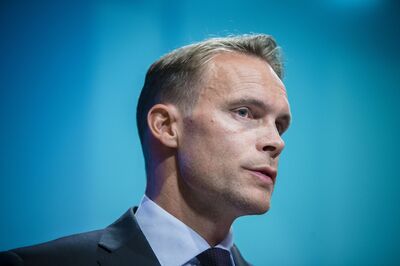Norway’s $940 billion sovereign wealth fund has plenty of room up to its risk limit, and that’s just how it wants it.
The risk the investor took compared with its benchmark even slid in the first quarter. The expected relative volatility dipped to 0.32 percentage point at end of March, compared with 0.34 percentage point at the end of 2016. The level is far below the 1.25 percentage points ceiling set by its overseers at the Norwegian Finance Ministry.

Trond Grande
“It’s the risk we want to take now, relatively speaking, and we wish to have some form of buffer toward that limit,” Trond Grande, the wealth fund deputy CEO, said in an interview Friday after the investor released its full first-quarter report.
The fund earlier this month reported gains of $35 billion in the first quarter, boosted by the biggest quarterly rally in global stocks in more than three years amid surging economic optimism. But it also said that there was a reason to be more “cautious” on continued increases for global stocks.
As equity markets continue to rally, the fund could be forced to pare its stock holdings to comply with other risk mandates set by the government. It needs to pare down its equity position should it move 4 percentage points beyond its 62.5 percent limit. It held 64.6 percent in stock at the end of March.
“When stock markets perform better than fixed income markets it means that the proportion of shares in the portfolio, and in the benchmark, increases,” Grande said. “At some point, this limit will be reached.”
The rise in the portion of stocks it holds did increase the fund’s outright volatility in the first quarter to an expected annual change in its value of 10.9 percent, or about $100 billion, from 10.6 percent at the end of December.
The investor is keeping it close to the vest in the bond market as well, where it has kept the so-called duration of its portfolio shorter than its benchmark, meaning it will outperform when rates rise.
The duration has now “increased some” as yields have fallen and issuers have sold bonds with longer maturities at lower rates, Grande said.
It also takes less credit risk than it’s allowed to. Only 2.1 percent of its fixed-income investments were rated below BBB-, far below the 5 percent maximum set by the ministry.
The fund is prepared to tackle increased volatility in the financial markets should Marine Le Pen emerge as the winner of the second round of French elections next month.
“This is a long-term fund, you must be prepared for periods of troubled markets and, if anything, this fund is very well placed to withstand that kind of turmoil,” Grande said.
Courtesy: Bloomberg
